Interested in a bit of exercise and getting to know the history of Daylesford a little better? Here’s a history walk from the centre of town up Albert Street, through the old camp and police reserve, up to Wombat Hill around the gardens, and then back down again on Central Springs Road past the Uniting, Anglican and Catholic Churches.
Great exercise and you can always have a break in the Wombat Gardens. About an hour all up, depending on whether or not you dawdle.
Start at the village green in front of the Daylesford Hotel and make your way up Albert Street. At the top of Albert Street you get to Old Camp and Police Reserve. The old Courthouse building that is now the Daylesford Neighbourhood Centre stands at the entrance. Walk past the old Courthouse on the right and up the hill through the old Police Reserve. On the way through the Reserve you will get a sense of Daylesford’s past, including one of its most famous and grizzly local crimes, the murder of Maggie Graham.
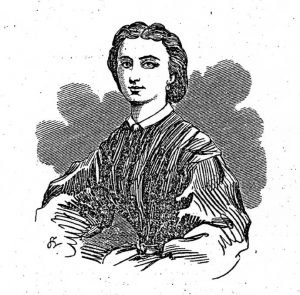
Maggie Graham, 1846-1864
Graham, an 18 year old local barmaid, only recently married, was murdered in December 1864. David Young was found guilty for her death and hanged in Castlemaine Gaol following a circuit court trial presided over by Sir Redmond Barry.
Barry is controversial. He was the judge in the Ned Kelly trial and he handed out many extreme judgements. Recent arguments suggest he may have condemned an innocent man in sentencing David Young to death.
The Reserve you walk through on your way up the hill from Camp Street is on Djadja Wurrung land. Before they were dispossessed by European settlement in the 1830s, the whole area was a densely forested . The Daylesford area was known as Wombat Flat and Wombat Hill by the Europeans. With the massive influx of miners in the 1850s gold rush, the area was renamed Daylesford.
The Police Reserve was established to deal with the expansion in the gold rush period. It is one of the most complete examples of an early European rural police precinct.
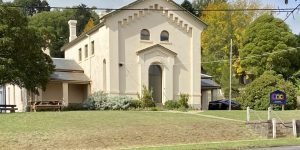
The Old Court House
When you walk past the Courthouse, be sure a look at the front and notice its striking face-like features.
The police reserve was set aside for the courthouse, police quarters and gaol in 1854. This was an element of the fashionable Romanesque style of the time.
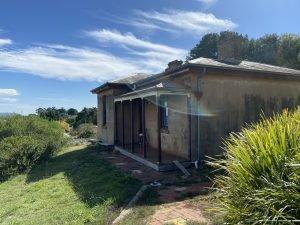
The old Police Office and quarters
Past the courthouse on your left, is the police quarters and office. Constructed in 1875 by local builder George Clayfield, there is only one other serving example in Victoria. It was renovated and ‘modernised’ in 1914. The original police station quarters was on Camp Street. At the time it was, by some accounts, ‘one of the worst habitations allowed to a member of the force’. The old police station was demolished for a new one in the 1970s situated adjacent to the Courthouse to the south. The cream brick building and the house behind it are now empty and waiting for a new purpose in life. The current ‘new’ police station is in Vincent Street, closer to the centre of Town.
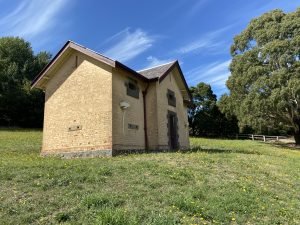
The Old Gaol
On your right, the original gaol was probably a single cell. The lock up that is still there was built to replace it in 1858, the same year as the court house. It one of the earliest brick and stone lock-ups built in Victoria. Only five still remain.
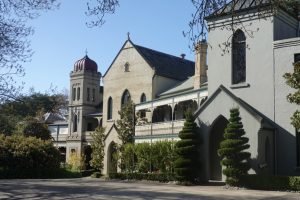
The Convent
As you go up the path, you will see the old oval and derelict cricket pitch of the now gone Catholic primary school. Through onto Daly street in front of you is the magnificent Convent, now an art gallery, café and function centre.
Go up the steep path to the Wombat Gardens to the right of the Convent on Daly Street. When you get to the top you can either go round on the paths to the left or to the right and through the main gardens past the Wombat Hill House. On the other side of the garden, you come out through the main entrance onto Central Springs Road. From there it’s an easy walk straight down Central Springs Road past the churches and back to the roundabout at the top end of Vincent Street and there you are – in the centre of town again.

Christ Church

Uniting Church
The first church on your left on your way down the hill is the Anglican Christ Church, believed to date back to 1862-63. It was designed by well-known Melbourne architect Leonard Terry who also designed the Melbourne Club building.
The second church on the left is the Uniting Church, formerly the Wesley/Methodist Church, built in 1865.

St Peter’s Catholic Church
St Peter’s is the blue stone Catholic church behind the hedge opposite the Uniting Church.




